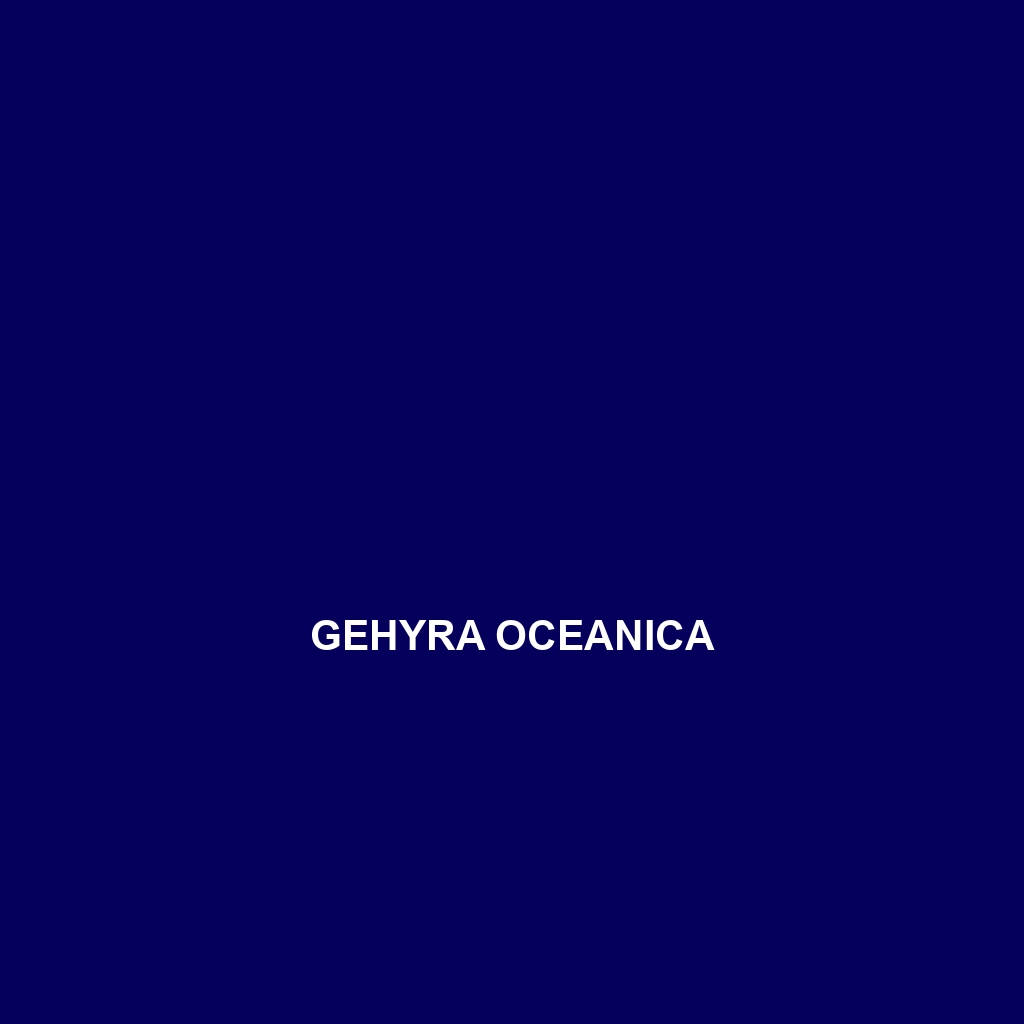Common Name
Gehyra oceanica
Scientific Name
Gehyra oceanica
Habitat
Gehyra oceanica, commonly known as the Pacific Ocean Gecko, is primarily found in tropical and subtropical regions of the Pacific Islands. Its natural habitats include lush rainforests, arid savannas, and even coastal marine habitats on islands such as Vanuatu, Solomon Islands, and New Caledonia. The species thrives in warm and humid environments, often being associated with areas that provide ample shelter, such as rocky crevices and trees. This gecko is particularly adaptable, allowing it to occupy a variety of ecological niches within temperate forests and coastal ecosystems, where it finds food and protection from predators.
Physical Characteristics
Gehyra oceanica is a medium-sized gecko, typically measuring between 10 to 20 centimeters in length. What sets this species apart are its distinctive coloration and patterns. The dorsal surface is usually a blend of earthy tones, ranging from brown to gray, which allows for effective camouflage against the bark of trees and rocky outcrops. Some individuals exhibit subtle markings such as spots or stripes, further enhancing their ability to evade predators. Their flattened bodies and long tails contribute to their agility, making them adept climbers. Additionally, they possess adhesive toe pads, enabling them to navigate vertical surfaces with ease.
Behavior
The behavior of Gehyra oceanica is particularly fascinating, as they exhibit primarily nocturnal habits, becoming active after dusk to hunt and interact. During mating seasons, males engage in elaborate courtship rituals that include vocalizations and displays of physical prowess to attract females. Social interactions are generally limited outside the breeding season, with individuals being more territorial. They are known for their ability to remain still for extended periods, an adaptation that aids in avoiding detection by both predators and prey. Furthermore, these geckos exhibit a unique behavior called autotomy, where they can shed part of their tail as a distraction to escape from predators.
Diet
Diet: Gehyra oceanica is an insectivore, primarily feeding on a diverse range of insects such as crickets, moths, and spiders. Their diet may also include small invertebrates and occasional plant matter, making them somewhat omnivorous in nature. They are skilled hunters, using their keen eyesight to detect movement at night, and their quick reflexes allow them to catch prey effectively. These geckos often forage actively on trees, utilizing their climbing abilities to reach food sources that are not accessible to ground-dwelling predators.
Reproduction
The reproductive cycle of Gehyra oceanica coincides with the warmer, wetter months of the year. Mating typically occurs during the spring and summer, with females laying one to three eggs per clutch that are deposited in secluded, moist locations to ensure protection from the elements and predators. The eggs undergo an incubation period of approximately 60 days before hatching, with the young emerging fully formed and capable of climbing almost immediately. Parental care is limited post-hatching, as the young are independent and must fend for themselves to survive.
Conservation Status
Currently, Gehyra oceanica is categorized as a species of least concern on the IUCN Red List, indicating that, at present, it faces no significant widespread threats. However, habitat loss due to deforestation and the introduction of invasive species poses risks that could threaten its population in certain locales. Conservation efforts are focused on protecting natural habitats and promoting ecological awareness in regions where this gecko is found.
Interesting Facts
One interesting fact about Gehyra oceanica is its ability to change color slightly based on its environment and emotional state, a characteristic that provides effective camouflage and aids in communication with other geckos. Contrary to some gecko species known for their social structures, Gehyra oceanica tends to be solitary outside of mating periods. This species can also live up to 10 years in the wild if it evades natural predators and environmental threats.
Role in Ecosystem
Gehyra oceanica plays a crucial role in its ecosystem as a predator of insects, thus contributing to natural pest control. By maintaining the balance in populations of various insect species, these geckos support the health of the forest and coastal habitats they inhabit. Additionally, being part of the food web, they serve as prey for larger predators, including birds and small mammals. Their presence indicates a well-functioning ecosystem, underscoring the importance of biodiversity in maintaining ecological stability.
